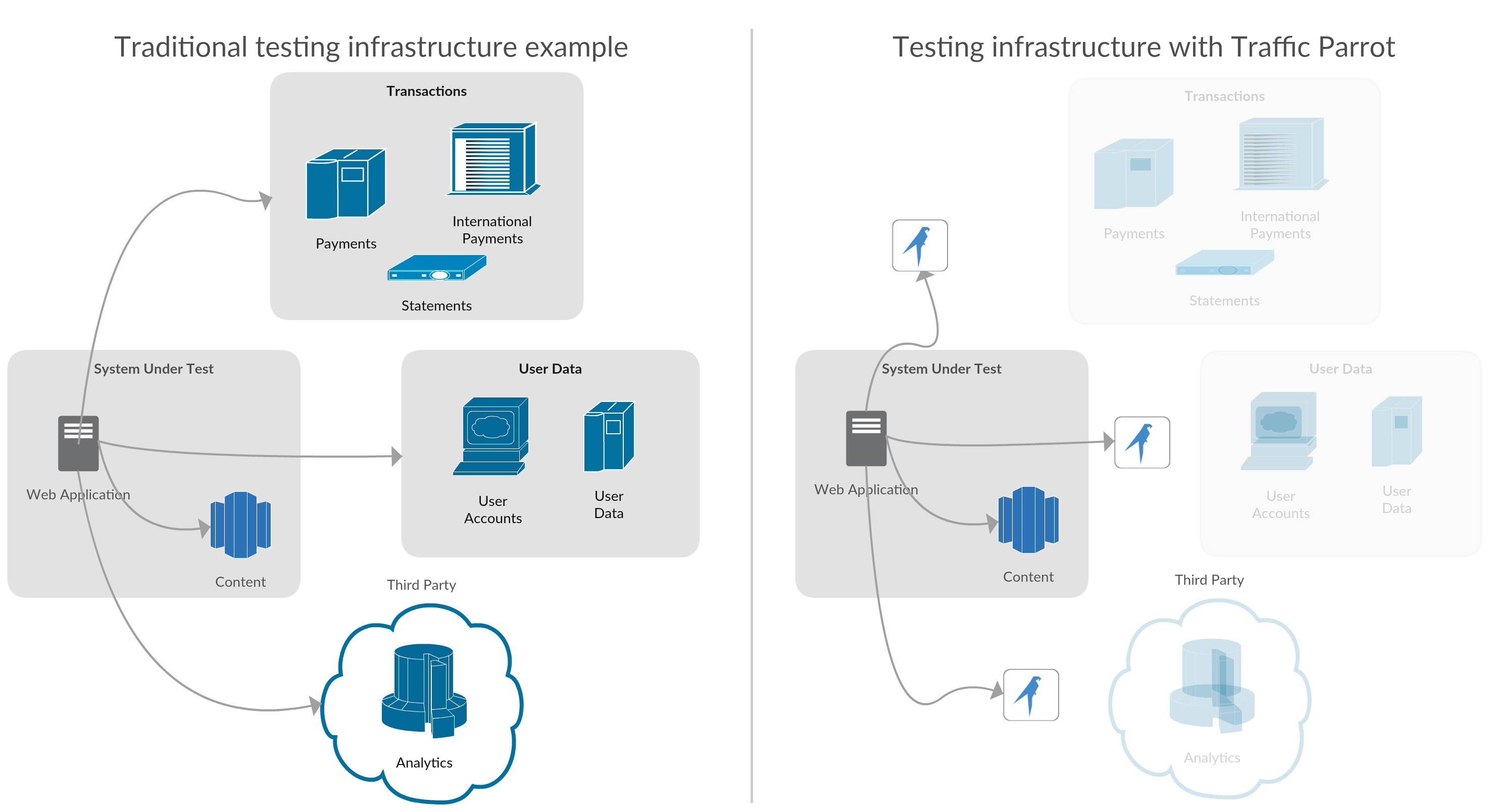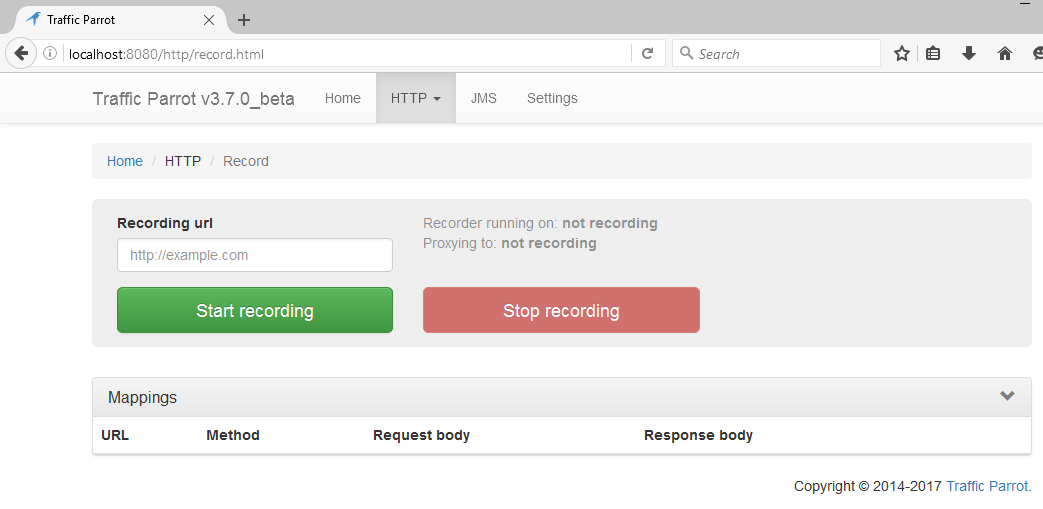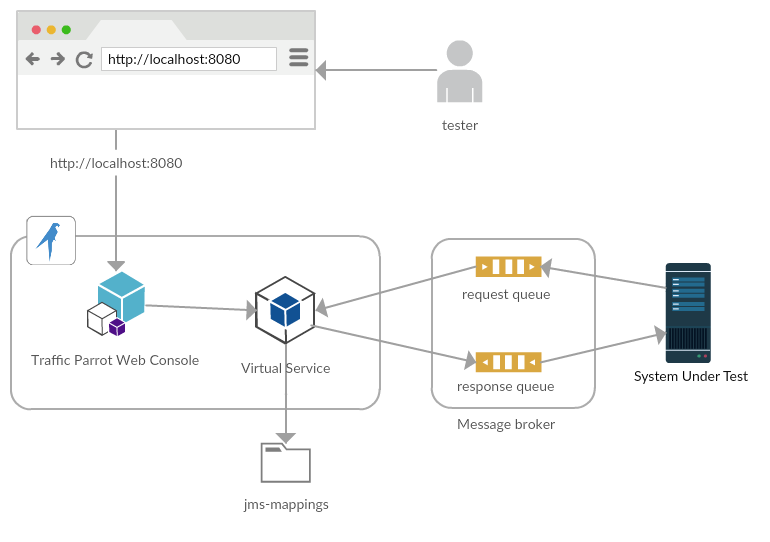Data sheet
« Back to documentation homeOverview
This document is addressing Traffic Parrot v3.x.x. Traffic Parrot is a product of WB Software
Consultancy Limited.
Traffic Parrot v3.x.x is a service virtualization technology. It provides test doubles to support the
testing phase of SDLC by simulating APIs, services, and systems.
Where does Traffic Parrot fit in?
Administration console
Components
Capabilities
Traffic Parrot Enterprise provides a range of functionalities to help you with service virtualization:
- HTTP and HTTPS service virtualization
- JMS service virtualization (ActiveMQ, IBM® MQ, more coming soon)
- Native IBM® WebSphere MQ service virtualization
- File transfers
- Record and playback traffic for HTTP(S), JMS, Native MQ and File transfers
- Edit recorded traffic
- Add mappings manually
- Persisting the mappings on local filesystem in easy to version control format
- Adding and editing request/response pairs by manually entering details
- Adding and editing request/response pairs by using templates defined in a scenario file
- Request matching
- XML, JSON or other body content
- XPath matching
- Regular expression matching
- Header value matching
- Request URLs and path matching
- HTTP Passthrough mode
- Recording proxied HTTPS traffic
- Response templates with many types of extensions for generating dynamic responses
- Generating responses based on data from CSV files
- Simulating delayed responses
- Simulating error and faulty HTTP responses and network faults
- Filtering recording by content type
- Logs access via browser
- Importing traffic from other service virtualization tools (on request)
- Running in Docker, Kubernetes, OpenShift
- And many more, explore the documentation for more details
Supported platforms
Traffic Parrot requires Java JVM version 7 or above. Traffic Parrot runs on most hardware platforms and operating systems supporting Java. That includes most server, desktop and laptop hardware providers as well as most operating systems like Windows, Linux and other UNIX systems.
Minimum hardware requirements
- 128MB RAM
- 200MB HDD
Minimum software requirements
- Java JVM version 7 or above
- Chrome, Firefox, MS Edge or IE 10+ web browser




